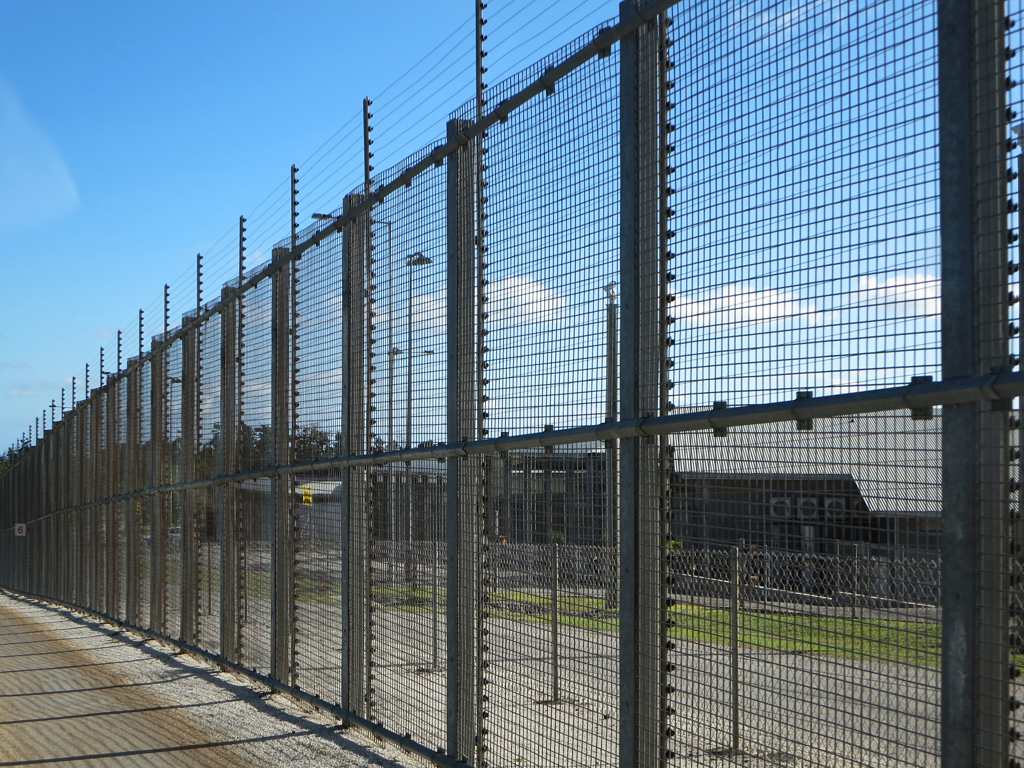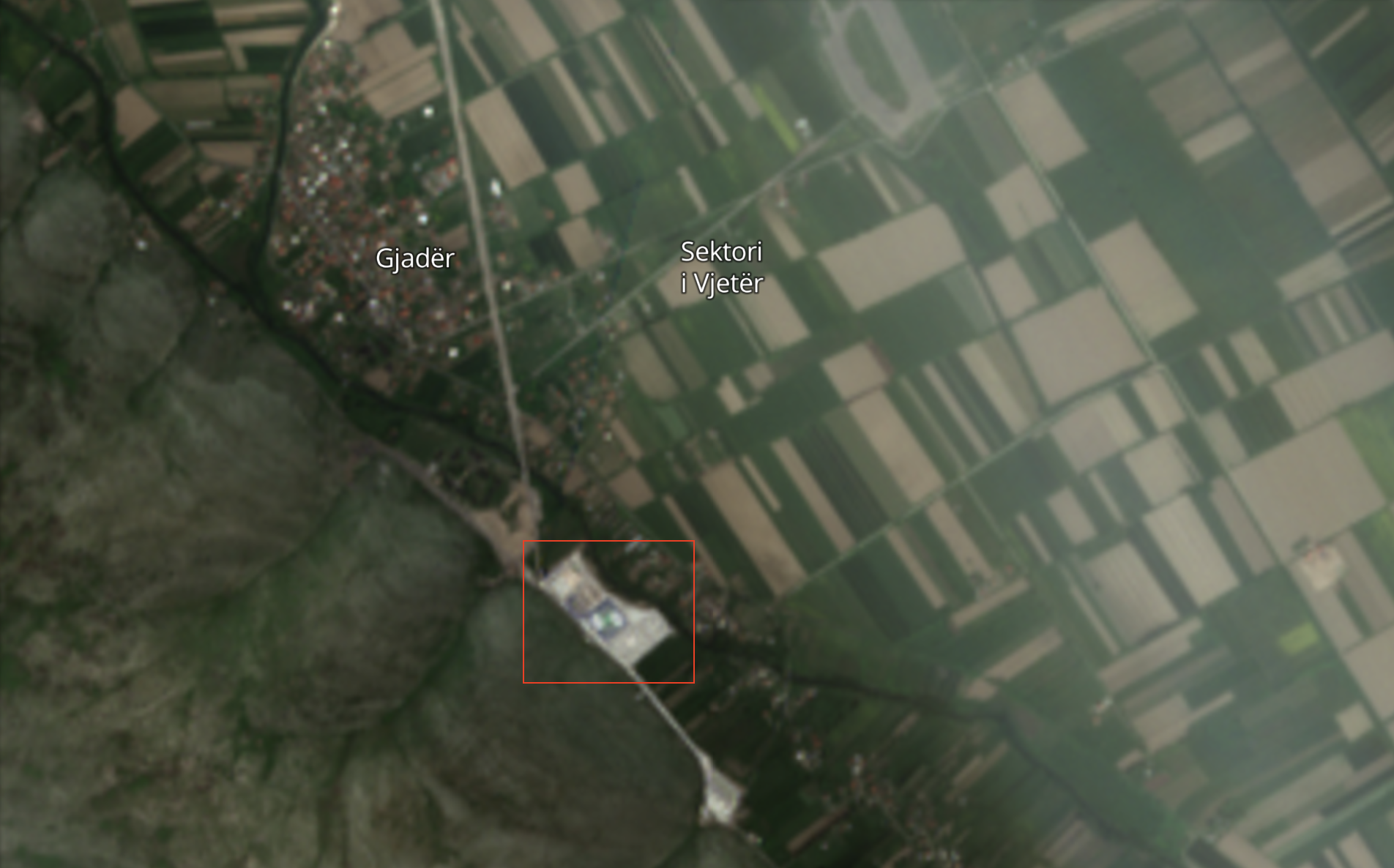November 6, 2023 - Bilateral Agreement Signed in Rome
Italy and Albania sign an agreement that allows Italy to build facilities for border and asylum procedures in Albania, free of charge.


By Jessi Kume, EU Policy Coordinator at the Border Violence Monitoring Network (BVMN).
Trigger Warnings: violence, self-harm
Header image: A picture of the fencing around the Australia-managed detention centre on Christmas Island, taken in 2015. Credits: David Stanley
On March 28th 2025, the Italian Government passed a decree-law that turned its detention centers in Albania into deportation hubs (known in Italian as Centri di Permanenza per il Rimpatrio or CPR). Up to that point, Italian courts had repeatedly found that the transfer of asylum seekers to these centers was contrary to EU law.
On the 11th of April, we witnessed the deportation of 40 people on the Italian military navy ship Libra. Approximately 40 officers in riot gear were waiting for them in Shëngjin in Albania when they arrived. The people disembarked from the ship in zip ties. Member of the European Parliament Cecilia Strada, who was present in Shëngjin when the ship arrived, reported that the individuals were kept restrained for the entire journey — including during meals and while using the restrooms. Italian Minister of the Interior, Matteo Piantedosi, responded: “The use of zip ties on the wrists is a procedure normally adopted by operators and not only do I not distance myself from it, I support it.” Yet, according to reports from the Italian National Guarantor for the Rights of Persons Deprived of Liberty, restraint during transport should only be used in extreme circumstances. What is the purpose of this spectacle? What justifies putting 40 handcuffed people on a ship and deporting them? What is the goal behind this violent symbolism, aggravated by the inherent violence of detention itself?
None of the CPRs in Italy were at full capacity, and none of the individuals taken to Albania were informed of their deportation. The lawyers for the deportees were informed only after the transfers had already taken place — in some cases, they discovered the news upon arriving for their scheduled visit, only then finding that their clients were no longer in Italy. On top of that, there are the related violations of liberty, the right to information, access to justice, and fundamental procedural safeguards.
The night the people were locked up in the CPR in Gjäder three incidents of self-harm were recorded in the center with further incidents reported in the days that followed. As of the latest report on April 27th, there have been 35 critical incidents, mostly acts of self-harm, including attempted suicides. On April 27th, following a further inspection by MEP Strada, it was found that only 25 individuals remain in custody, raising questions about the fate of the remaining 16. No information has been provided in response to MEP’s inquiries.
The inspection also revealed that several detainees are taking psychotropic medication explicitly to endure the conditions they are subjected to. Structural deficiencies in the facility itself were reported, casting serious doubt on its compliance with safety and human dignity standards. One alarming example: fire sprinklers are installed directly above tables, creating potential anchoring points for attempted hangings.
 Satellite image showing Italy's detention centre in Gjäder, Albania. Credits: Modified Copernicus Sentinel data 2025/Sentinel Hub
Satellite image showing Italy's detention centre in Gjäder, Albania. Credits: Modified Copernicus Sentinel data 2025/Sentinel Hub
According to Italian grassroots network NO AI CPR, people locked up in Gjäder have their phones confiscated, and are allowed only a few minutes of phone calls—far too few to speak with their lawyers. Families have no contact with them and have been trying to contact NO AI CPR for any news related to their relatives. People are locked in cells inside containers, and meals are left outside the doors. The bathroom facilities only provide scalding hot water making it impossible to use.
Meanwhile, the Rome Court of Appeal has already weighed in with a decision stating that if a person transferred to the CPR in Albania applies for international protection, they cannot be detained in the Gjäder and must be returned to Italy.
The European Commission has remained silent on the mistreatment of the 40 deportees. Quite the contrary, European Commissioner Magnus Brunner has repeatedly praised Italy’s ’Albania model’ as an 'innovative' solution. It does not take much to realise that the Italy-Albania deal bears a striking resemblance to one of the Commission’s most controversial provisions in its proposed Return Regulation. In fact, Brussels has opened up the possibility of deporting people whose asylum claims are rejected to facilities in third countries. The operation of such deportation centres would be defined by bilateral agreements between Member States and the third countries in question.
And while the Commission regularly asserts that the return hubs would need to comply with international law, it is clear that, after 10 years of Fortress Europe, the EC is happy to pay lip service to the idea of human rights for people on the move.
We believe that the “Return Hubs” proposition under the newly proposed Return Regulation is a veiled attempt to legitimize the next step in the EU’s cruel and illegal border regime. So let’s call these centers for what they are: black site prisons where humanity and rights are taken to die.
Italy and Albania sign an agreement that allows Italy to build facilities for border and asylum procedures in Albania, free of charge.
The first Italian ship arrives in Albania, carrying 16 individuals from Egypt and Bangladesh. Only 12 of them can be detained in Albania.
The Tribunal of Administrative and Regional Enforcement (TAR) rules that the detention of the 12 individuals in Albania is not valid. The individuals are subsequently returned to Italy.
Prime Minister Meloni and her party, Fratelli d'Italia, begin publicly attacking the judiciary, referring to them as "red robes" in response to the ruling.
Italy publishes a list of 19 "safe countries" to justify sending rescued migrants to Albania.
A second attempt to send 7 people to Albania is made.
The TAR refers the issue of migrant detention to the European Court of Justice. In the meantime, the seven individuals are returned to Italy.
A new group of 49 men from Egypt, Bangladesh, Ivory Coast, and Ghana are sent to Albania.
The Court of Appeal of Rome orders the return of the third group back to Italy.
Judges and prosecutors go on strike to defend their independence in response to the government's attempts to reform the judicial system.
The European Commission proposes a new Return Regulation, which would allow EU member states to open deportation hubs in third countries.
A decree from Italy’s Council of Ministers turns the detention centers in Albania into Centers for Permanent Repatriation (CPR).
40 people are taken from Italian CPRs and deported to Albania.
The European Commission lists Bangladesh, Colombia, Egypt, India, Kosovo, Morocco, and Tunisia as "safe countries of origin". Asylum seekers from these countries will undergo accelerated asylum procedures, likely to lead to refusal.
A Bangladeshi citizen is returned from Albania to Italy then deported back to Bangladesh.
The Court of Appeal of Rome rules that individuals who apply for asylum in Albania must return to Italy.
Following an inspection, only 25 out of 41 individuals remain in Gjäder. The whereabouts of the other 16 are unknown.
The Border Violence Monitoring Network accepts submissions for its blog. To contribute, please send your submission to press@borderviolence.eu
Thank you for your interest. We look forward to your contribution!